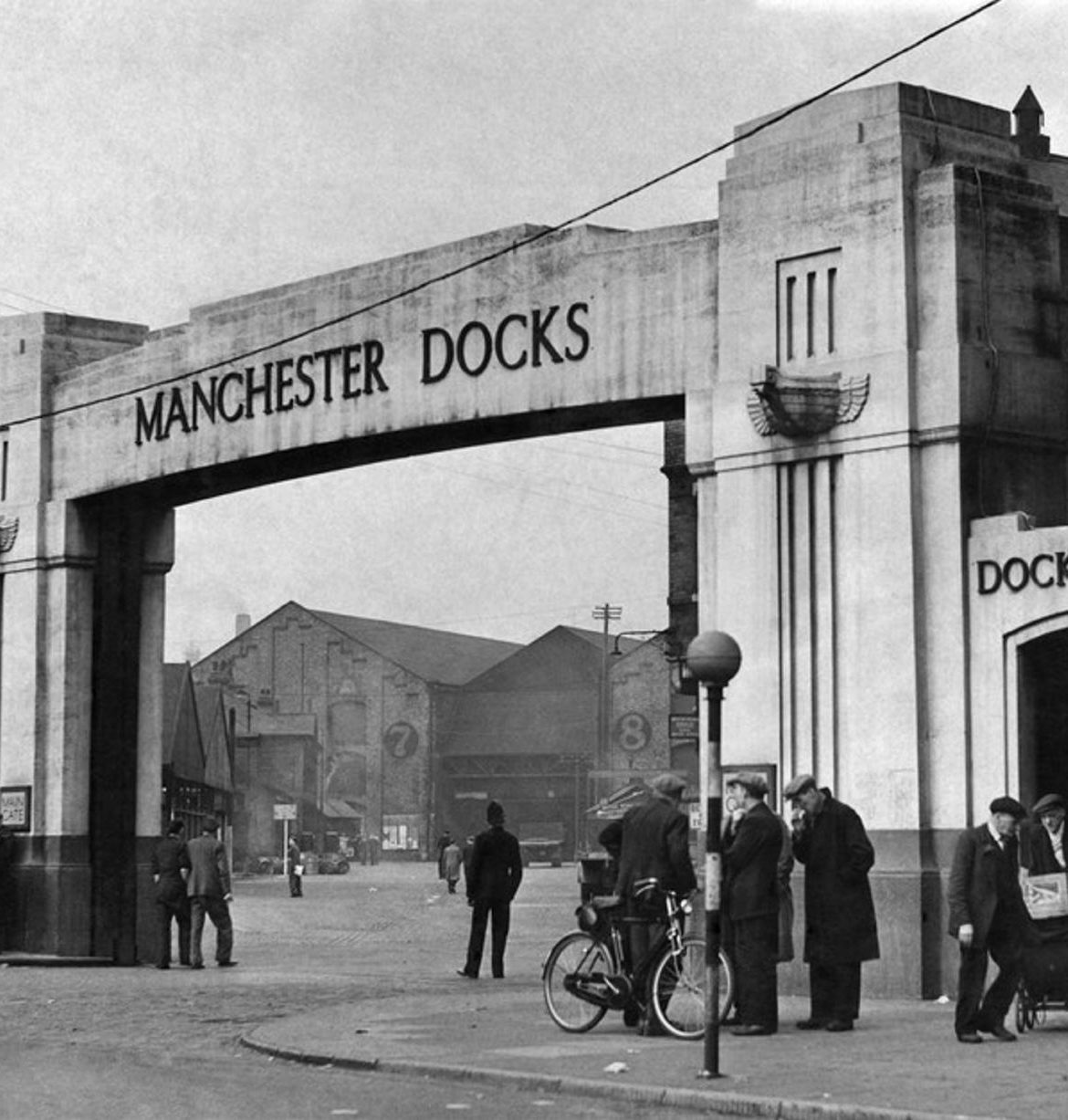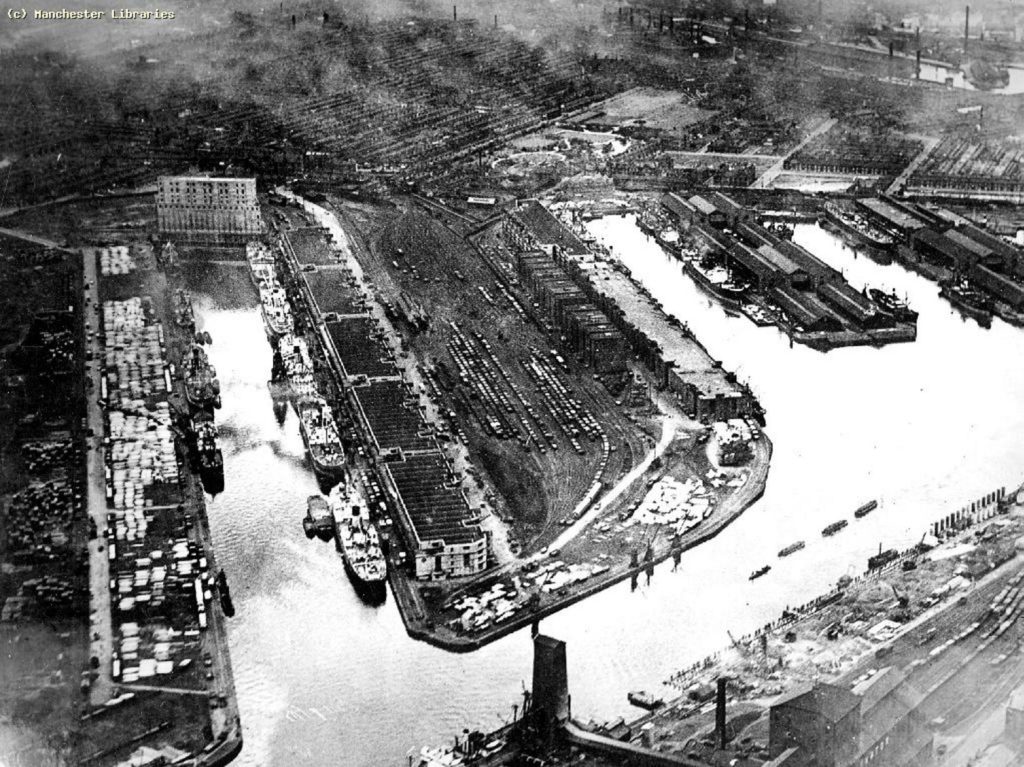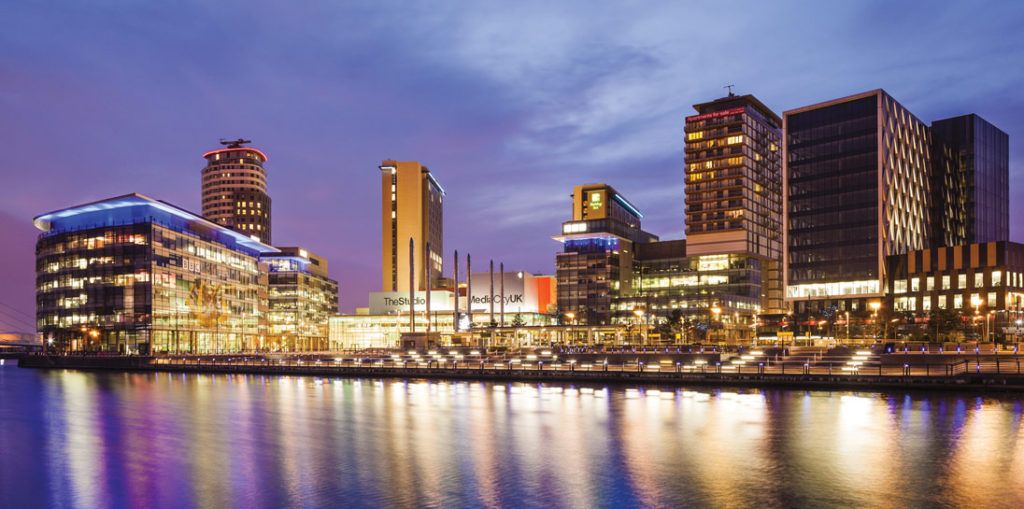Our forthcoming presentation, Broken by Motionhouse is a show that examines our precarious relationship with the earth; the dancers leap and scramble for safety, navigating the cracks of a world where nothing is ever as it seems.
The land of Salford Quays has undergone many upheavals in its time too, transformed in just over 100 years from a sprawling industrial port to an innovative centre for internationally recognised art, media and technology. As the area has grown, declined and grown again, local residents, workers and organisations have had to respond to this shifting, unpredictable landscape – an experience that is mirrored and expressed through the nimble movement of Motionhouse’s dancers.
Aerial view of Manchester Docks in the 20th century
So, how did we get here? It would take much more than a single blog post to cover the extensive history of the area but here are ten milestones in the development of Manchester Docks and Salford Quays at a glance:
- Queen Victoria opens Manchester Docks in 1894; the development expands until it covers a huge area of 120 acres, including over nine docks in Manchester, Salford and Stretford
- By 1947, Manchester Docks is Britain’s third busiest port owing in part to the destruction of Hull’s docks during World War II
- The rapid decline of Manchester Docks just forty years later is triggered by increasing ‘containerisation’, leaving larger freight ships unable to navigate Manchester’s tight waterways
- The once mighty Manchester Docks close in 1982, resulting in 3,000 jobs losses
- Salford City Council purchases the land in 1984 using a Derelict Land Grant;one year later, the ambitious Salford Quays Development Plan is launched
- Between 1986 and 1990 the infrastructure of the docks is changed beyond recognition, featuring an internal waterway network with promenades, housing, offices and more built at Docks 6 and 7
- In 1987, after years of industrial pollution, water quality in the canals improves thanks to a new compressed air mixing system; 12,000 coarse fish are introduced to the area and thrive in their new home
- The idea for The Lowry – originally known as Salford Quays Centre For Performing Arts – is first conceived in 1988; twelve years later, it opens to the public
- The eye-catching and innovative building housing Imperial War Museum North, designed by world-renowned architect, Daniel Libeskind, opens across the water from The Lowry in July 2002
- Salford Quays is chosen as the site for the BBC’s relocation in 2006, leading to the huge development of MediaCityUK by Peel
MediaCityUK in the 21st century
…which more or less brings us to the present day! Do you live or work at Salford Quays? What are your notable memories of this changing landscape, and where do you think it will look like in 100 years’ time?
Some pictures courtesy of Manchester Libraries, Information and Archives, Manchester City Council. Browse over 80,000 historical photographs of Manchester and buy high quality prints online at http://images.manchester.gov.uk


